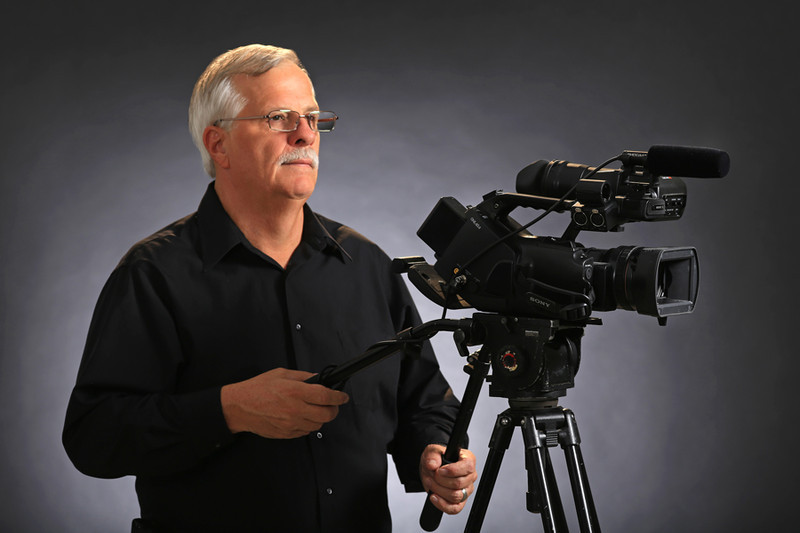Delving Into the Mechanisms of Legal Videography: Unveiling Its Procedure in Safeguarding Genuine Aesthetic Testament for Judicial Proceedings
In the world of judicial proceedings, the function of lawful videography stands as a foundation in maintaining and offering visual proof. As innovation continues to development, the systems behind legal videography have actually ended up being progressively complex, supplying a crucial layer of authenticity to testimonies recorded on video clip.
Historic Development of Legal Videography
Taking a look at the historical development of lawful videography reveals a considerable change in the recording and presentation of aesthetic proof within the lawful landscape. In the past, legal procedures greatly relied upon created transcripts and photographs to record occasions and offer proof. Nevertheless, with the development of video clip modern technology, the lawful market saw a standard change in just how visual testament was caught and provided.
The evolution of legal videography can be traced back to the late 20th century when innovations in video clip recording equipment made it a lot more obtainable for usage in courts. This technological development not just improved the precision and integrity of aesthetic evidence but also reinvented the way situations existed to juries and courts (Legal Videography). Attorneys started to recognize the convincing power of video clip recordings in communicating emotions, nuances, and non-verbal hints that written pictures or records alone might not record efficiently

Modern Technology Innovations in Video Clip Documentation
What key technological improvements have revolutionized video documents in the lawful area? The legal area has actually seen substantial innovations in video clip documents technology that have improved the authenticity and dependability of aesthetic evidence in judicial proceedings.
Additionally, developments in video clip file encryption and watermarking technologies have actually strengthened the security and tamper-proof nature of video clip proof, securing it against unauthorized changes or tampering. Additionally, the development of cloud storage solutions and remote gain access to capabilities has streamlined the storage space, access, and sharing of video evidence, facilitating smooth partnership amongst attorneys and guaranteeing efficient accessibility to vital visual testimonies when needed. These technological improvements in video documents have actually most certainly revolutionized the lawful area, enhancing the accuracy, integrity, and admissibility of visual proof in judicial process.
Function of Lawful Videographers in Court Room Settings
The advancement of video clip paperwork technology in the lawful field has actually necessitated a critical duty for legal videographers in court setups, making certain the stability and reliability of aesthetic testimonies provided throughout judicial procedures. Lawful videographers play a basic function in recording and maintaining exact visual proof that can be critical in court cases. Their duty encompasses establishing up devices, tape-recording process, and creating high-quality videos that precisely mirror the events in the courtroom.
In court room settings, legal videographers must follow strict standards and requirements to preserve the credibility of the visual document. They should have a keen eye for information and a thorough understanding of lawful procedures to ensure that the video they record is a real depiction of the events that took place. In addition, lawful videographers frequently function very closely with lawful groups to ensure that the video proof lines up with the case's requirements and can be efficiently provided in court to sustain the lawful disagreements being made. Overall, the duty of legal videographers in court room settings is important in promoting the principles of justice and ensuring the transparency of lawful proceedings.

Ensuring Admissibility and Honesty of Video Proof
To keep the integrity of aesthetic evidence offered in lawful proceedings, ensuring the admissibility and stability of video clip evidence is an important obligation for lawful videographers. Admissibility describes the approval of evidence by the court, and for video clip evidence to be admissible, it should fulfill certain requirements. Legal videographers play a vital function in making certain that the videos they record follow the guidelines of proof, such as importance, dependability, and credibility.
Integrity of video proof entails informative post maintaining the originality and precision of the video from the moment it is recorded till it exists in court. This includes safely storing the video documents, recording the chain of custodianship, and avoiding any type of meddling or changes. Legal videographers need to stick to strict protocols to assure the stability of the video evidence and protect against any type of obstacles to its credibility.
Future Trends in Legal Videography
Offered the enhancing reliance on modern technology in legal proceedings, lawful videographers are positioned to embrace ingenious developments shaping the future of aesthetic statement capture and discussion. Among the famous fads coming up is the assimilation of online fact (VR) and boosted reality discover here (AR) modern technologies into legal videography. These modern technologies have the prospective to change how visual evidence is provided in court rooms, enabling courts and courts to submerse themselves in the scene of the criminal activity or case.
In addition, the use of expert system (AI) algorithms for video clip analysis is anticipated to enhance the procedure of evaluating and examining large quantities of video footage. AI can aid in identifying crucial minutes, abnormalities, and patterns within videos, enhancing the performance of legal investigations.

Verdict
In verdict, lawful videography has actually played an essential role in giving authentic aesthetic evidence for judicial process. Through technological advancements and the expertise of lawful videographers, the integrity and admissibility of video evidence are made certain in courtroom settings. As lawful videography remains to develop, it will be essential to copyright standards that preserve the precision and reliability of visual statement for the future of lawful process.
Taking a look at the historical development of lawful videography discloses a considerable change in the recording and discussion of visual evidence within the legal landscape.The advancement of video clip documents technology in the legal field has necessitated a critical duty for legal videographers in courtroom setups, guaranteeing click to find out more the stability and reliability of visual statements provided during judicial procedures. Additionally, legal videographers often work very closely with lawful teams to ensure that the video clip proof straightens with the instance's needs and can be properly offered in court to sustain the legal debates being made.To keep the integrity of aesthetic proof offered in legal process, making certain the admissibility and integrity of video proof is a crucial responsibility for lawful videographers. As legal videography continues to develop, it will be necessary to support standards that preserve the accuracy and integrity of visual statement for the future of lawful procedures.
Comments on “Leading Advantages of Specialist Legal Videography for Litigation”